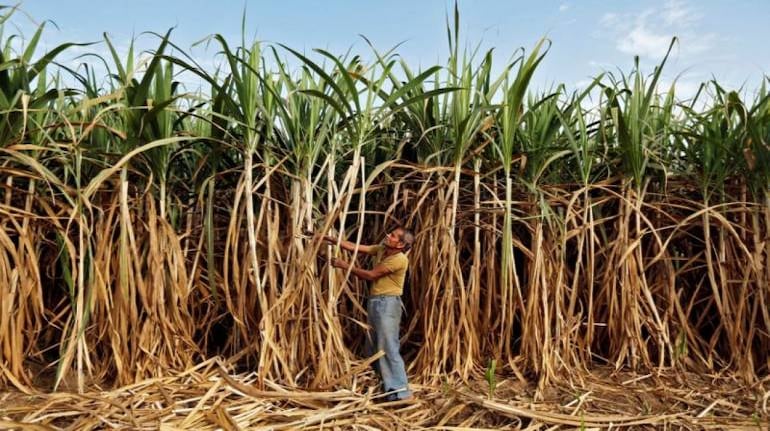



As anticipated, the Cabinet Committee on Economic Affairs chaired by the Prime Minister has approved an 8 percent hike in the fair and remunerative price (FRP) for sugarcane to Rs 340 a quintal for the 2024-25 cane crushing season. This price will be applicable to a sugar recovery rate of 10.25 percent.
Unfortunately, this decision adds another layer of distress to the already beleaguered Indian sugar industry, grappling with feedstock restrictions and a de facto ban on exports.
Given the dynamics of India’s competitive democratic politics, both central and state governments often rush to revise upwards the fair and remunerative price (FRP) and State advised price (SAP) of cane without adequately considering the repercussions for the country's milling sector. This predilection is not difficult to understand.
One could argue that the government's approach is rooted in addressing the concerns of sugarcane farmers, who form a significant vote bank. The increase in FRP could be seen as a measure to support farmers and ensure a fair return on their investment.
A Mess Created By Governments
However, what remains perplexing is the government's reluctance to revise upwards the minimum selling price (MSP) of sugar since 2018, even though the cane FRP has steadily increased by a whopping 33.3 percent, from Rs 255 a quintal to Rs 340 a quintal between 2017-18 and 2024-25. The surge in raw material costs, coupled with price controls on sugar, and elevated interest rates, justifies a revision in the MSP of sugar.
Furthermore, several states including Uttar Pradesh, Punjab, Haryana and Uttarakhand have raised their state advised prices of cane which are invariably higher than FRP fixed by the Centre. Consequently, sugar mills in these states bear the brunt of the additional costs to compensate cane growers.
The recurrent hikes in cane FRP and SAP, seemingly detached from domestic or global sugar prices, pose a significant downside risk to the viability of India's sugar milling sector. This risk intensifies as the government has capped ethanol diversion of sugar to 1.7 million tonnes and maintains a de facto ban on exports.
As a result, sugar mills find it challenging to optimise their product mix that maximises operating margins. That exacerbates the issue of cane arrears, paving the way for demands for subsidies and bailouts. This problem could escalate with the anticipated surge in sugar production from Brazil in the 2023/24 season potentially triggering a sharp correction in global sugar prices which have already fallen from their peak at US$ 0.275 per pound in Dec to 0.225 per pound on Feb 22.
Export Bans Don’t Work
It is argued that allowing sugar exports will reduce domestic availability and worsen food inflation. However, the weight of sugar in food and beverage price inflation is less than 3 percent, and in retail (CPI) inflation, it’s just 1.36 percent. Clearly, high sugar prices can’t be solely blamed for food inflation.
Policymakers must recognise that the mere announcement of export curbs, rather than controlling prices, signal a serious supply shortage, fuelling hoarding and speculation by bulk buyers and traders as well as households which tend to overstock fearing further increases in prices. That makes export curbs ineffective at controlling prices. A little wonder then that the prices of sugar continue to rise despite effective supply (current season production + carry-over stock from the previous season) exceeding consumption and prohibition on exports.
These export curbs also complicate matters for foreign buyers, portraying India as an unreliable supplier and prompting importing countries to look for alternative suppliers and/or boost local supplies through erection of import barriers. That will create complications for India when it will need to export its surplus sugar, a situation which is not unlikely if past records are any indication. To conclude, export curbs work neither in the short run nor in the long run even if one ignores their adverse implications for foreign buyers.
Sugar Companies Hit
Similarly, feedstock restrictions may not help contain food inflation but they’ll certainly deter long-term capital expenditure plans of sugar companies, essential for boosting ethanol capacities to achieve the 20 percent Ethanol Blended Petrol (EBP) target by 2025.
For instance, Triveni Engineering has put on hold the distillation capacity expansion at its Sabitgarh unit in Uttar Pradesh primarily due to change in regulations that is likely to exacerbate shortage of feedstocks. In the short run, sugar mills find themselves constrained to a sub-optimal product mix guided by whimsical policy actions, thereby compromising the operating margins and profitability of the milling sector.
Despite a surge in prices in the last couple of quarters, many sugar mills such as Shri Renuka Sugar or Bajaj Hindustan and EID Parry are either in the red or have seen sharp contraction in margins and profits.This is primarily because millers are not being allowed to benefit from favourable global prices through exports. In the domestic market, they’re forced to produce more sugar when ethanol can fetch better margins. That explains the relative underperformance of the stocks of Indian sugar companies.
To conclude, the government's decisions, particularly with regard to cane pricing, feedstock restrictions, and export curbs call for an urgent reassessment. Ignoring these concerns will jeopardise the long-term sustainability and global competitiveness of India's sugar industry, hindering its potential contribution to the nation's economic growth.
Prerna Sharma Singh is a director on the board of Indonomics Consulting Private Limited, a policy research and advisory startup, and heads its agriculture, food and retail practice. She tweets at @AgriFoodRetail. Views are personal, and do not represent the stand of this publication.
Discover the latest Business News, Sensex, and Nifty updates. Obtain Personal Finance insights, tax queries, and expert opinions on Moneycontrol or download the Moneycontrol App to stay updated!
Find the best of Al News in one place, specially curated for you every weekend.
Stay on top of the latest tech trends and biggest startup news.